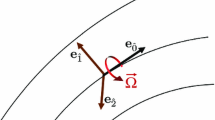Abstract
A convention with regard to geometry, accepting nonholonomic aether motion and coordinate-dependent units, is always valid as an alternative to Einstein's convention. Choosing flat spacetime, Newtonian gravitation is extended, step by step, until equations closely analogous to those of Einstein's theory are obtained. The first step, demanded by considerations of inertia, is the introduction of a vector potential. Treating the electromagnetic and gravitational fields as real and imaginary components of a complex field (gravitational mass being treated as imaginary charge), the Maxwell stress-momentum-energy tensor for the complex field is then used as the source for both fields. The spherically symmetric solution of these unified field equations describes the electron. Third, effects arising from motion of aether fluid with respect to the artificial reference systems of flat spacetime are included. On the grounds that attraction between likes and repulsion between likes are, a priori, equally possible, it is suggested that gravitational and electromagnetic phenomena should enjoy equal status. This can be achieved on the scale of an infinite cosmos by introducing a hierarchy of isolated systems, each of which is a universe when viewed internally and an elementary particle when viewed externally. A universe (defined by the Hubble radius), an electron, and a neutrino are three consecutive isolated systems of the hierarchy. Implied is the existence of antiuniverses where gravitational mass has opposite sign and antimatter predominates. Remarkable relationships between physical constants emerge.
Similar content being viewed by others
References
P. F. Browne,Found. Phys. 5, 387 (1975).
P. F. Browne,Found. Phys. 6, 457 (1976).
R. H. Dicke,Phys. Rev. 125, 2163 (1962).
J. A. Wheeler and R. P. Feynman,Rev. Mod. Phys. 21, 425 (1949).
P. F. Browne,Phys. Lett. 29A, 588 (1969).
D. W. Sciama,Mon. Not. Roy. Astr. Soc. 113, 34 (1953).
D. Lynden-Bell,Mon. Not. Roy. Astr. Soc. 135, 413 (1967).
F. Hoyle and J. V. Narlikar,Proc. Roy. Soc. A 282, 191 (1964).
L. Brillouin,Proc. Nat. Acad. Sci. U.S. 53, 475, 1280 (1965).
J. Hund,Z. Phys. 124, 724 (1948).
R. Arnowitt, S. Deser, and C. W. Misner,Phys. Rev. 120, 313 (1960).
R. d'E. Atkinson,Proc. Roy. Soc. A 272, 60 (1963).
F. H. J. Cornish,Proc. Roy. Soc. A 273, 413 (1963).
C. Møller,The Theory of Relativity (Oxford University Press, Oxford, 1972), pp. 474–479.
H. A. Wilson,Phys. Rev. 17, 54 (1921).
R. H. Dicke,Rev. Mod. Phys. 29, 363 (1957).
P. F. Browne,Nature 193, 1019 (1962).
R. C. Jaklevic, J. Lambe, A. H. Silver, and J. E. Mercereau,Phys. Rev. Lett. 12, 159 (1964).
Y. Aharanov and D. Bohm,Phys. Rev. 115, 485 (1959).
H. Erlichson,Am. J. Phys. 38, 162 (1970).
L. Motz,Phys. Rev. 126, 378 (1962).
T. A. Welton,Phys. Rev. 74, 1157 (1948).
E. A. Power,Am. J. Phys. 34, 516 (1966).
E. M. Kelly,Am. J. Phys. 31, 785 (1963).
G. Rosen,Can. J. Phys. 45, 2383 (1967).
P. Harris,Can. J. Phys. 47, 1884 (1969).
K. Johnson, M. Baker, and R. S. Willey,Phys. Rev. Lett. 11, 518 (1963).
Th. A. J. Maris, V. E. Herscovitz, and G. Jacob,Phys. Rev. Lett. 12, 313 (1964).
Author information
Authors and Affiliations
Rights and permissions
About this article
Cite this article
Browne, P.F. Complementary aspects of gravitation and electromagnetism. Found Phys 7, 165–183 (1977). https://doi.org/10.1007/BF00709005
Received:
Issue Date:
DOI: https://doi.org/10.1007/BF00709005



